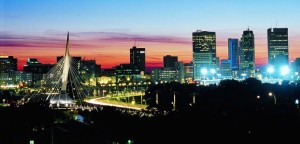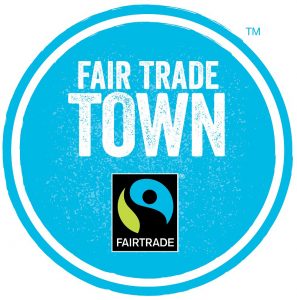On this page, you will find information about the climate change actions taking place at various levels of government in Manitoba.
- Federal Government of Canada
- Manitoba Provincial Government
- City of Winnipeg
- City of Selkirk
- City of Brandon
- City of Dauphin
- City of Morden
- Federation of Canadian Municipalities (FCM)
Federal Government of Canada
The Pan-Canadian Framework on Clean Growth and Climate Change was released in 2016 as a national collective plan (find PDF here). Manitoba and Saskatchewan were the only two provinces to not sign on. The framework is broken down into the following areas that address various economic sectors, innovative technologies, and resilience for climate change.
- Complementary actions to reduce emissions
- Adaptation and climate resilience
- Clean technology, innovation, and jobs
As part of the framework, the federal government also mandated that each province and territory establish a means of pricing carbon pollution.
The framework is a working plan to reach the goal of reducing carbon from the 2016 projected levels of 742 Mt of carbon dioxide to 523 Mt of carbon dioxide by 2030. This goal involves the following reduction of future emissions:
- Reduction of 89 Mt from measures announced in November 2016 (ex. heavy duty vehicles, provincial carbon pollution measures, and international cap and trade)
- Reduction of 86 Mt from measures announced in the Pan-Canadian Framework, including those associated with electricity (ex. Coal phase out by 2030), buildings, transportation, and industry
- Reduction of 44 Mt from public transit and green infrastructure, technology and innovation, and stored carbon (forests, wetlands, soils)
The Canadian Government later released the Federal Actions for a Clean Growth Economy that addresses the federal plans of action. Find the PDF version here.
Here is the First Annual Synthesis Report on the Status of Implementation, released in December 2017, that outlines climate action that has occurred in the first year of the Pan-Canadian Framework.
Manitoba Provincial Government
The Province of Manitoba is a founding member and ongoing supporter of Climate Change Connection.
ACTION PLAN
In 2016, the federal government announced that each province and territory was to introduce either a cap and trade system or a carbon tax by 2018. The Manitoban government chose to design a made-in-Manitoba carbon pricing option that would take into consideration the province’s history of low-carbon hydroelectricity generation.
In March 2017, the province of Manitoba held public consultations to explore what Manitobans wanted for a greener future. Later that year, the Made-in-Manitoba Climate and Green Plan was released. This strategic plan includes four main pillars: climate, jobs, water, and nature.
The pillars include the following focus areas:
Climate
- Clean Energy
- Carbon Pricing
- Sector Emissions Reductions
- Adaptation
Jobs
- Innovation and Cleantech
- Financing and Investment
- Skills and Training
- Green Infrastructure
Water
- Wetlands and Watersheds
- Agriculture and Land Use
- Flood and Drought
- Water Quality
Nature
- Parks and Protected Areas
- Wild Species and Habitat
- Forests and Natural Areas
- Conservation
The provincial government has yet to release an official plan for how the carbon tax will be put to use. Additionally, Manitoba still requires a central policy to determine the impacts that climate change will have on infrastructure.
EXPERT ADVISORY COUNCIL FOR CLIMATE AND GREEN PLAN
In June 2018, Sustainable Development Minister Squires announced the professionals that will advise the government as the Made-in-Manitoba Climate and Green Plan gets underway. The council will provide recommendations on policy, programs, and measures within the plan. For more information on the individuals of the advisory council, click here.
ACHIEVEMENTS
The Province of Manitoba has been involved in a variety of activities to reduce greenhouse gas emissions and to address climate change effects. These actions have ranged from support for fundamental climate change research and development to support for reducing the emissions from new and existing facilities.
Climate change research and development covering a wide area of topics has received assistance. These range from research into the past climatic record of the province to a wind energy resource assessment.
In terms of reducing emissions, some of the more notable efforts include the conversion of Manitoba Hydro’s Selkirk Generation Station from coal to natural gas, the use of procurement policies to reduce greenhouse gas emissions and the advanced energy-efficiency standards adopted in construction of new capital projects such as the new Red River Community College downtown campus.
City of Winnipeg
The City of Winnipeg released a working Climate Action Plan (WCAP) in 2018. In 2022 the Community Energy Investment Roadmap (CEIR) marked the end of the short-term actions of the WCAP. The CEIR is now being used as a framework for the planned update of the WCAP and development of a Climate Resilience Strategy. This update began in 2024.
City of Selkirk
The City of Selkirk partnered with Prairie Climate Centre (PCC) at the University of Winnipeg to develop a Climate Change Adaptation Strategy. In May 2019, the City won the Canadian Network of Asset Managers’ prestigious Tereo Award for leadership and innovation in Asset Management for its strategy.
City of Brandon
The City of Brandon partnered with Urban Systems in 2022 to develop a comprehensive Climate Change Action Plan. This plan focuses on both reducing our environmental footprint and adapting to the challenges of a changing climate. On May 15, 2023, City Council officially adopted the plan.
Find a snapshot of Brandon’s Environmental Strategic Plan here.
Brandon has been successful in several sustainability initiatives, including:
- Offering a curbside green cart program since 2012
- Obtaining certification as the 19th Fair Trade Town
- Certifying the Brandon Municipal Airport as the area’s first LEED building
- Planting hundreds of trees to “green” the city
Brandon has also developed an extensive greenspace plan to continue to develop and promote natural areas within the city.
City of Dauphin
The City of Dauphin with support from the Federation of Canadian Municipalities (FCM) has developed a Community Energy and Emissions Plan (CEEP). The plan focuses on the reduction of energy consumption and greenhouse gas (GHG’s). The Federation of Canadian Municipalities (FCM) has, in association with ICLEI, produced a protocol for monitoring and reporting energy consumption and emissions called the Partners for Climate Protection Protocol (PCP). The CEEP progresses the City of Dauphin to milestone 3 through the PCP program.
Find more information about the City of Dauphin’s work here.
City of Morden
The City of Morden is taking proactive measures to address climate-related challenges through the development of a Community Climate Adaptation Plan announced April 2025 in partnership with Urban Systems. The plan will assess local climate hazards such as extreme precipitation leading to localized flooding, prolonged heatwaves, and shifting seasonal patterns.
The plan will not only assess risks but also provide implementation tools to strengthen community resilience. While the current focus is adaptation rather than reducing greenhouse gas emissions, Dias notes that discussions around energy efficiency and sustainability could emerge in future planning.
Federation of Canadian Municipalities (FCM)
 FCM is a network for Canadian municipalities to share knowledge and learn from each other. They recognize the importance of local governments taking action, especially against climate change. The FCM website features excellent resources for creating climate change resilience and mitigation, that can be found here and below.
FCM is a network for Canadian municipalities to share knowledge and learn from each other. They recognize the importance of local governments taking action, especially against climate change. The FCM website features excellent resources for creating climate change resilience and mitigation, that can be found here and below.





